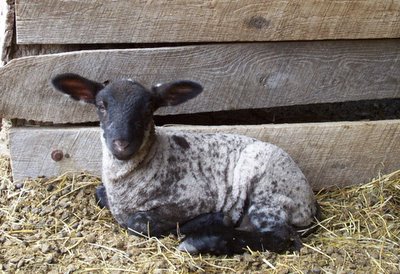 For the last unit of the Food! class at June Jordan we compared the economics behind large industrial farms and small organic farms in the US. Our project may not be completely scientific, but it was extremely interesting.
For the last unit of the Food! class at June Jordan we compared the economics behind large industrial farms and small organic farms in the US. Our project may not be completely scientific, but it was extremely interesting.We compared USDA data for the average "large" US farm - definied as a farm with over $250,000 of income. The USDA says there are 151,000 large farms in the US - this makes up 7% of all the farms, but 59% of all farm production. That means a small number of big farms are growing most of our food.
Then, we called up a small organic family farm to see how they measured up. Small farms (income is less than $250,000) make up 90% of all US farms. But organic farms are less than 1% of all farms - there are only 8,000 certified organic farms in the US.
So, we compared the annual financial statement for a large farm and a small, organic farm. Here is what we found.
| Large Farm | Small Organic Farm | |
| Total Income | $1.4 million | $76,800 |
| Net Profit | $200,000 | $32,000 |
| Amount of Government direct payment | $95,000 | $5,000 |
| Profit Margin | 14% | 42% |
| % of Costs spent on Fertility | 7% (fertilizers and pesticides) | 3% (compost) |
| % of Costs spent on Labor | 8% | 26% |
 What do you think? Which is more productive?
What do you think? Which is more productive?Where would you rather raise a family? The small, organic farm is eating all its own food, and trading for other foods the family doesn't grow. The large farm eats less than 1% of its own food - most of what it produces is only good for animals to eat or to be processed.
Pictures of another small farm by Farmgirl of the wonderful Farmgirl Fare.
P.S. Read Michael Pollan's The Omnivore's Dilemma to learn more about industrial farm production and small-scale farming.
industrial farm
small-scale farm
organic farm


2 comments:
Our farmer friend sent me this response to this blog post:
"Thanks for being a champion of folks like us. It is so inspirational to read what you’re doing. It helps me to remember why its all important. Today is one of those days when I walk around so tired I’m dizzy. It's good to remember that it's all for a really wonderful reason."
woooww so good picture :)
kpss
Post a Comment